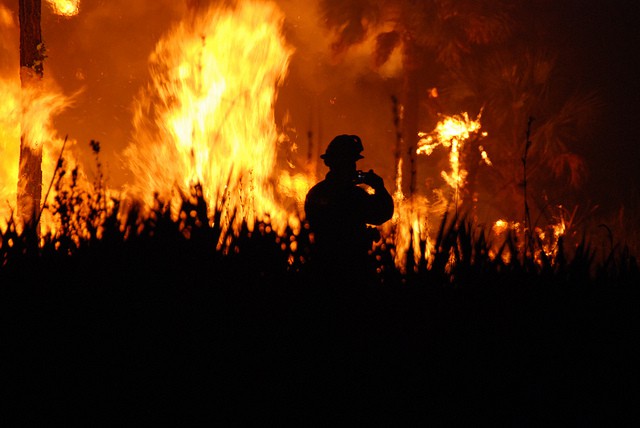The climate crisis triggered devastating wildfires that burned in 2019 and 2020 across Australia were at least 30% more likely and intense, a new analysis shows.
Since 1900, scientists found that there is more than 30% increase in the chances of the type of extreme weather that prompted the blazes, and compared to the beginning of the 20th-century, fire conditions like this are at least four times more likely.
However, the authors consider this one to be likely a conservative estimate, and due to the underestimations of the climate models of the actual increases in extreme temperatures and heatwaves, the risk of fires aggravated by far more than 30%.
“We found that climate models struggle to reproduce these extreme events and their trends realistically,” Dr. Geert Jan van Oldenborgh of the Royal Netherlands Meteorological Institute, who contributed to this analysis said in a statement.
The World Weather Attribution (WWA), a coalition of academic and government scientists globally that investigates how the climate crisis is influencing extreme weather events, conducted the analysis. Previous WWA studies investigated the role the climate crisis played in Europe’s sweltering June 2019 heatwave and the last year’s massive amounts of rain Tropical Storm Imelda dumped on Texas.
“Here for the first time, we have quantified how climate change has affected the risk of bushfires in the region of Southeastern Australia that has just experienced very severe fires,” said Dr. Friederike Otto, the acting director of the Environmental Change Institute at the University of Oxford and a co-investigator involved in this study.
As per the findings of the group, human-caused climate change has acted in favor of these catastrophic fires and made fire seasons like the current one are more likely in the future.
Unless the governments worldwide are unable to restrict global warming to less than 2 degrees Celsius, then in the years coming, the fire conditions like those experienced this summer could be four times more likely.
As our planet is currently on track to warm by 2 degrees Celsius and more, the fire seasons could be even more extreme in the future.
The role of the climate crisis in Australia’s heatwaves has also been explored by scientists like the one that occurred in last December that shattered the continent’s all-time average temperature record.
According to their analysis, they found heatwaves to be the primary driver of the increasing fire risk. As the heatwaves in Australia are now about 1 to 2 degrees Celsius (1.8 to 3.6 degrees Fahrenheit) hotter than they were in 1900, the fire risks have become about 10 times more likely.
In Australia’s history, the fires that burned in 2019 and 2020 were among the worst.
The infernos killed at least 28 people, destroying thousands of homes and affecting around an estimated one billion animals across the country over several months.
All told, an estimated 18 million hectares (44.5 million acres), an area larger than the entire state of Florida, were scorched.
New South Wales, the hardest-hit part of the country, announced on Tuesday that in the state, for the first time in 240 days, there were finally no fires burning.
Australia is the world’s driest continent as well as one of its hottest, and the propensity for wild swings between weather extremes was long.
However, in recent decades, its climate has gotten even hotter.
On average, the country is more than 1 degree Celsius (2.8 degrees Fahrenheit) hotter compared to 1910, and last year was the hottest and driest year in the country’s recorded history.
An ideal environment for fires had been created because of those abnormally high temperatures and drought conditions.
But for more than a decade, scientists have warned that an extreme bushfire season was coming.
And more fire seasons like this one could be on the horizon if global efforts failed to stop heat-trapping gas emissions.






